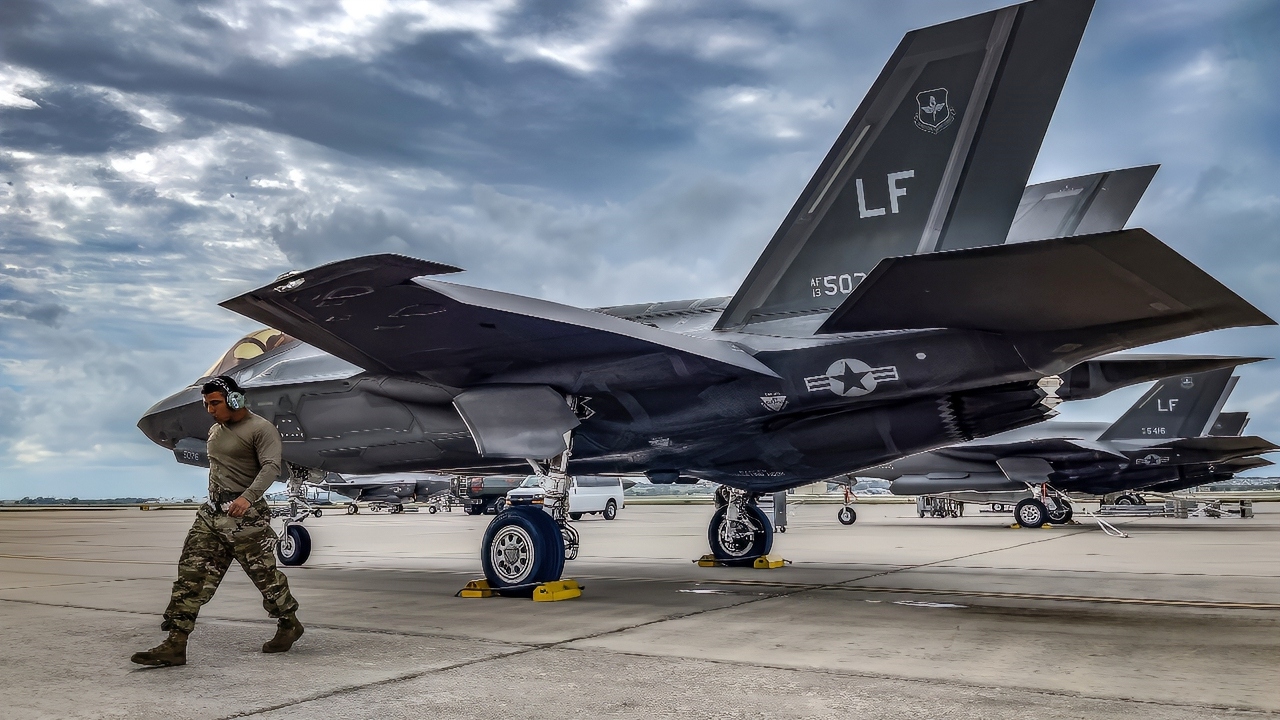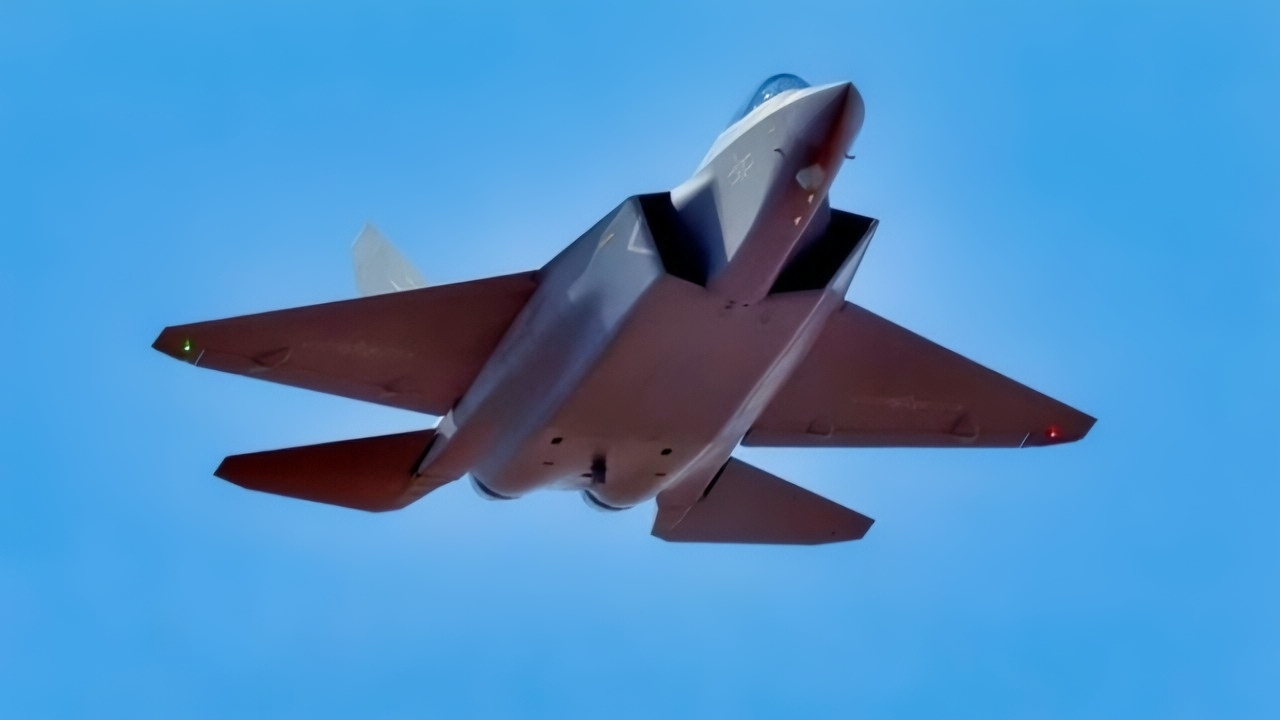Key Points and Summary – While China’s new J-35 stealth fighter resembles the American F-35, the F-35’s true, decisive advantage lies in its vast global network.
-The F-35 is a mature program with over 1,000 jets operated by numerous allies worldwide.

U.S. Air Force service members from the 62nd Fighter Squadron, Luke Air Force Base, Ariz., conduct flight line operations in support of the F-35 Lightning II TDY, Oct. 28, 2021, at Joint Base San Antonio-Kelly Field, Texas. The 62nd FS will be training with F-16s from the 149th Fighter Wing and the 301st Fighter Wing, along with T-38s from the 301st Fighter Wing. The multi-role capabilities of the F-35 allows them to perform missions which traditionally required numerous specialized aircraft. The complimentary air superiority capabilities of the F-35 will augment our air superiority fleet and ensure we continue to “own the skies” over future battlefields. (U.S. Air Force photo by Brian G. Rhodes)

A new F-35A Lightning II fifth-generation fighter aircraft flies over the Alaska Canada Highway en route to its new home at the 354th Fighter Wing, Eielson Air Force Base, Alaska, April 21, 2020. The F-35 represents a new model of international cooperation, ensuring U.S. and Coalition partner security well into the 21st Century. (U.S. Air National Guard photo by Tech. Sgt. Adam Keele)
-This creates a resilient, globe-spanning ecosystem of shared training pipelines, multinational supply chains, and maintenance expertise that is incredibly difficult to replicate.
-In contrast, the J-35 is a new jet operated solely by China with a domestic-only industrial base.
-This “baked-in” global network gives the F-35 a crucial strategic edge.
The F-35 Fighter’s Globe-spanning Training Pipeline and Logistics Chains Ensure Resiliency
Despite the similarities between China’s J-35 stealth fighter and the American-led F-35, the latter aircraft is a much more mature platform that benefits from broad supply chains and from the expanding club of countries that fly the fifth-generation stealth fighter.
The United States and allies tout the capabilities of the F-35, the world’s most mature fifth-generation stealth fighter program. Aside from its ability to evade adversary radar, the F-35’s unique sensor suite offers pilots unprecedented situational awareness and the ability to disseminate that information to other aircraft and commanders on the ground.
It is a jack-of-all-trades, a multi-role fighter that can handle myriad missions and challenges.
Broadly speaking, China’s J-35 appears outwardly similar to the F-35, though perhaps only superficially so.
But what role would the J-35 ultimately play within the PLAAF? Barring direct observation in a conflict scenario, the answer to that question will remain somewhat opaque.
However, some guesses can be made with a reasonable degree of confidence based on the aircraft’s observed characteristics.
One potential scenario could see the J-35 flying alongside the J-20, another, larger stealth fighter, as the J-20’s smaller, more lightweight counterpart.
Estimates of the J-20’s role suggest that the larger fighter would function somewhat like the United States Air Force’s F-22 Raptor as an air superiority fighter and intercept platform.
In his hypothetical teaming scenario, China’s J-35 might be a Swiss Army Knife-esque multitool, capable of responding to a variety of operational scenarios.

Chinese J-20 Fighters. Image Credit: PLAAF.

J-20 Mighty Dragon in Camo Back in 2018. Image Credit: Chinese Air Force.
One significant difference between the American F-35 and China’s J-35 is the latter’s engines.
While the F-35 is a single-engine aircraft, its Pratt & Whitney F135 engine is very high-performance. During a routine, economical flight, the F-135 generates 28,000 pounds of thrust. With the afterburner, that figure jumps dramatically to 43,000 pounds of thrust.
China’s dual-engined J-35 likely flies with a pair of WS-19 turbofan engines, an indigenously made alternative to the legacy Soviet engines that had originally been mated to the airframe earlier in the jet’s development.
Those engines are thought to generate around 25,000 to 26,000 pounds of thrust, and narrow the gap between China and the West/Russia in engine production.
Industrial Espionage and Convergent Design
Since the J-35 made its first public appearance last year at the Zhuhai Airshow in China, much ink has been spilled about the aircraft’s superficial resemblance to the F-35, with commentators pointing to broadly similar wing and air intake configurations.
While it is possible that F-35 industrial espionage influenced the design of the J-35, the shared characteristics of both fighters might be coincidental and a result of their shared operational roles.
Although it is within the realm of possibility that the J-35 gleaned important information by stealing from the F-35 program, “it is unlikely that gross aircraft planform and aerodynamic configurations would have benefited from such intelligence,” one analysis reads. But it adds that “more telling evidence might be if the development of certain avionics, weapons, or other mission systems may have benefited from intelligence garnered with the aim of countering the F-35.”

J-35A. Image Credit: Chinese State Media.

J-35 Fighter from China. Image Credit: PLAAF.
“Alas, confirmation of this matter would require detailed forensics of both the J-35/A and the F-35 family, which is unlikely ever to occur.”
A granular, definitive examination of both aircraft is exceedingly difficult, given the non-public nature of both aircraft’s finer details. But what can be said with some degree of confidence is that the edge held by the United States—and to a lesser degree, Russia—is quickly eroding. What can be said with confidence is that a more technologically sophisticated PLAAN today presents a firmer challenge than the PLAAN of even 10 or 15 years ago.
For the United States, aging fourth-generation aircraft, particularly platforms like the F-15, F-16, and the Navy’s F/A-18 Super Hornet, would face a stiff challenge from the J-35. Given the dearth of stealth features of those aircraft, the J-35’s radar-defeating (or, at the very least, radar-complicating) technologies harm their chances of survival.
But it is 2025, and the F-35 is a mature platform with decades worth of experience logged. The F-35 program has built more than 1,000 stealth jets and entered mass production years ago. The jet is already in service with close allies around the globe, serving in militaries throughout Europe and Asia, as well as with Israel in the Middle East.
The F-35 is genuinely a global fighter, and some of its components are built by those same allies, dramatically expanding the fighter’s defense industrial base and supply chains.
Multiple production nodes are a boon to all F-35 operators. F-35s in Germany’s Luftwaffe can be serviced with parts made in the United States and by F-35 maintainers from Singapore if needed. Prospective Polish F-35 pilots can train on British F-35s in Japan. The J-35, on the other hand, has a single operator and a single country source for parts and knowledge of the jet: China.
The flexibility not only of the F-35’s logistical chains but also the wide dispersion of institutional knowledge of the aircraft, its handling characteristics, and its maintenance schedules afford the stealth fighter a kind of ‘baked-in’ level of institutional knowledge that offers a holistic sort of resilience that is exceedingly difficult to replicate, particularly for China and its J-35.
About the Author: Caleb Larson
Caleb Larson is an American multiformat journalist based in Berlin, Germany. His work covers the intersection of conflict and society, focusing on American foreign policy and European security. He has reported from Germany, Russia, and the United States. Most recently, he covered the war in Ukraine, reporting extensively on the war’s shifting battle lines from Donbas and writing on the war’s civilian and humanitarian toll. Previously, he worked as a Defense Reporter for POLITICO Europe. You can follow his latest work on X.
More Military
Hwasong-20: North Korea’s New Solid-Fueled ICBM Has Arrived
Midway-Class Aircraft Carrier USS Coral Sea (CV-43) Has a Message for the U.S. Navy
Ukraine Just Unveiled Its New ‘Long Neptune’ Missile
The M1 Abrams Tank Can Go Much Faster Than the Army Admits
The U.S. Navy Has Its Own Aircraft Carrier-Killer Missile: Meet the Maritime Strike Tomahawk










